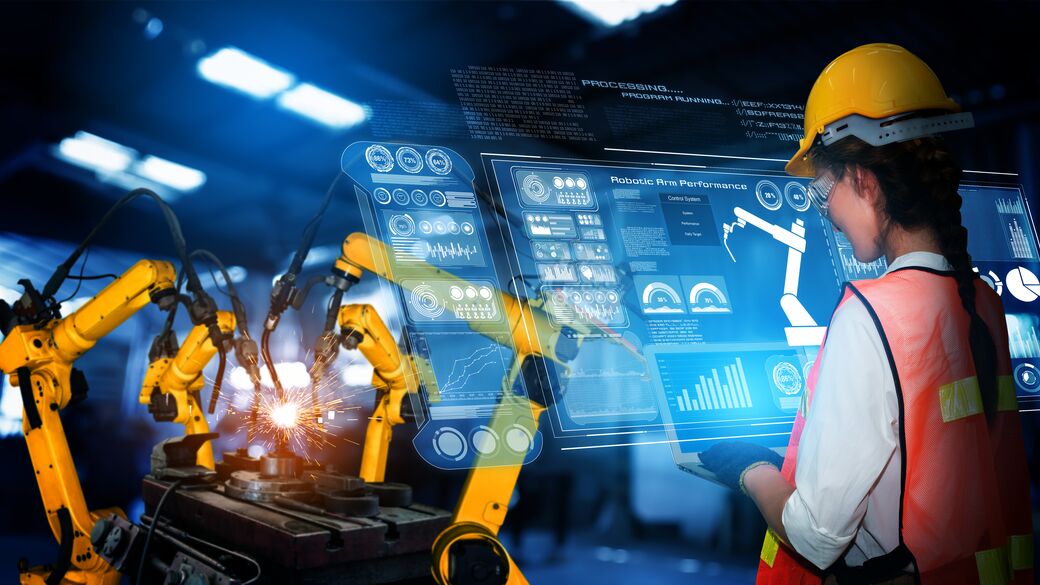
With Manufacturing Day events taking place this month, now is a great time to talk about how hard-working manufacturers can help offset the labor shortage by leveraging technology and partnerships that can draw excitement from future generations of workers.
Held annually on the first Friday of October, MFG Day seeks to inspire the next generation to pursue careers in modern manufacturing. Throughout the month, organizations around the U.S. open their doors to the public, showing students and their families what manufacturing really looks like.
When young people get a firsthand view of how essential goods are produced and how technology is shaping the future of the industry, it’s likely to spark or inspire interest in manufacturing. Given the persistent worker shortage, giving the next generation of workers a glimpse of technology is an important way to help ensure the industry can thrive today and tomorrow.
In fact, 60% of frontline manufacturers would take a pay cut to leave their current company for a more technology-driven factory, according to the Voice of the Essential Manufacturing Worker report.
“Today’s workforce is increasingly digitally aware, eager to make an impact, and willing to upskill to advance their careers.”
Kerrie Jordan, Epicor Vice President of Product Management
Epicor Vice President of Product Management Kerrie Jordan explains, “Manufacturers can attract and retain talent by equipping them with powerful yet accessible technologies like low-code/no-code workflow automation, embedded business intelligence, conversational AI, and step-by-step user guides. Combine these productivity solutions with educational opportunities like on-the-job training, and you’ve created a rewarding, long-term competitive advantage.”
Assessing the Manufacturing Labor Shortage
For years now, labor has been one of manufacturing’s biggest challenges. When jobs get posted, from entry level shop floor positions to highly specialized IT roles, companies report difficulty finding qualified candidates.
This has ramifications for your bottom line. According to Deloitte and The Manufacturing Institute, almost 45% of executives turned down business opportunities due to lack of workers.[i] This can add up to lost revenue, with 4 million jobs openings expected by 2030 and capacity to fill only 2.1 million of them.[ii]
Manufacturing is a strong and dynamic industry that’s rebounded well since the early days of the pandemic. It can offer career growth and stability amidst economic uncertainty, and advancements in solutions like Manufacturing Execution Systems (MES) give skilled workers the chance to work on the forefront of technology.
A Generation of Manufacturers Prepares to Leave
In general, there are two large scale demographic factors influencing the labor shortage. The first is an aging workforce. It’s estimated that more than 27% of manufacturing employees are baby boomers older than age 57.[iii] This puts them just five years away from when they can claim Social Security benefits.
These workers spent their careers attaining a wealth of industry and company knowledge. Every day, they navigate complicated processes and procedures that keep plants running and customer orders filled.
The good news is that 77% of manufacturing managers say their company is making upskilling a priority, according to the Voice of the Manufacturing Manager report. And frontline workers agree, with 80% saying that upskilling is a priority.
Bridging the Technology Gaps
There are an estimated 72.2 million millennials, making them the largest generation to have fully entered the workforce. Right behind them are 68.6 million future workers from Gen Z.
Millennials and Gen Zers came of age in a different work environment than their parents and grandparents. They lived through the recession and the advent of digital technology, and they want to work in innovative environments.
Manufacturing offers this opportunity, but that’s not always apparent to younger workers, who often have misperceptions of how manufacturing jobs stack up in terms of technology, benefits, and salary levels.
There are promising signs of change, though. For instance, in 2017, only 39% of consumers saw manufacturing jobs as innovative and oriented to problem-solving.[iv] Now 64% do.
Still, there’s plenty of opportunity, including MFG Day and beyond, to engage the next generation of workers—and to give them the tools to become manufacturing leaders.
Strategy 1: Keep Your Technology Updated
If young folks think manufacturing involves only heavy machinery, they’re in for a surprise. An Industry 4.0 factory features robots, augmented and virtual reality (AR/VR), and Industrial Internet of Things (IIoT) sensors. Automation is in the hands of end-users, with low-code/no-code solutions. For millennials and Gen Zers, these are the digital tools they expect to use at work.
Technology is not just for recruitment, of course. It’s a way to unlock value, especially when running on cloud-based enterprise resource planning (ERP) solutions that can leverage AI/ML and produce actionable data analytics that can help solve business challenges.
In one survey, for instance, manufacturers said they used automation to help fill 16% of their open positions.[v] Another report showed that robotics adoption by manufacturers is associated with higher rates of job satisfaction.[vi]
Strategy 2: Partner with Local Institutions
One way to inspire millennials and Gen Zers is to reach them early on. If you’re a large manufacturer, you may be a leader in tackling key industry issues—and you may have the resources to cultivate lasting relationships with community colleges and vocational schools.
These connections can lead to valuable partnerships during the right times. For instance, the Pennsylvania College of Technology recently received nearly $700,000 in federal grants to train manufacturing apprentices, while Georgia Tech received $65 million for AI manufacturing initiatives.
If you’re a smaller manufacturer, you might focus on building alliances from the ground up. One example comes from Northeast Ohio, where the Alliance for Working Together began in 2002 as an informal meetup for local manufacturers. Over the decades, it developed programs to place more than 1,000 students in industry careers.
In Winchester, Indiana, students at Winchester Community High School run Falcon Industries, a professional manufacturer capable of welding, woodworking, plasma cutting, and more. Their mission is to get practical experience on the production and business side of the industry by delivering high-quality products. Programs like these present opportunities for manufacturers to attract the next generation of workers.
Strategy 3: Develop Flexible Work Environments
One thing many of today’s workers value is workplace flexibility. But that can look different depending on circumstances.
On the shop floor, flexibility might mean a four-day workweek. And for managers, it might mean a hybrid schedule, since cloud-based ERP creates the opportunity for seamless remote work.
These ideas were brought to the forefront during the pandemic, but they’re nothing new. It was Henry Ford who popularized the five-day, 40-hour work week in 1926. The scheduling change energized his company’s workforce—and boosted morale, productivity, and business all at once.
Manufacturing Day is a great way to remember that the future of the industry is in the hands of the next generations. With all the high-tech automation, community support, and fresh thinking on flexible scheduling happening right now, there’s rarely been a more exciting time in manufacturing.
To learn about solutions to help you offset the labor shortage, start here.
[i] “Deloitte and The Manufacturing Institute: Big Gains in Perceptions of U.S. Manufacturing as Innovative, Critical and High Tech.” Deloitte, March 30, 2022
[ii]“Creating pathways for tomorrow’s workforce today.” Deloitte Insights, May 4, 2021
[iii] “Okay Boomer: Closing the Generation Gap in Manufacturing.” Association for Advancing Automation, March 8, 2022
[iv]“Deloitte and The Manufacturing Institute: Big Gains in Perceptions of U.S. Manufacturing as Innovative, Critical and High Tech.” Deloitte, March 30, 2022
[v]“Creating pathways for tomorrow’s workforce today.” Deloitte Insights, May 4, 2021
[vi]“Practical ways to tackle manufacturing’s labor crunch.” MIT Sloan, May 16, 2022







